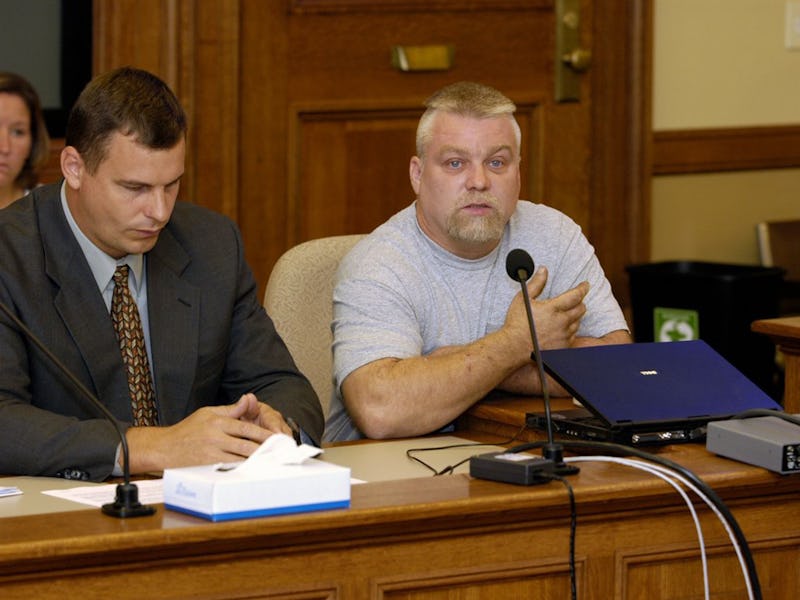The 'Making a Murderer' Petitions In Defense of Steven Avery Entirely Miss the Point of the Series
The documentary builds evidence that Steven Avery should be free, but that's not up to viewers to decide.

Netflix’s docuseries Making a Murderer has truly caught the nation by storm. There’s an ongoing Change.org petition calling for Steven Avery — the subject of the documentary who SPOILER is currently serving a life sentence without parole for the 2005 murder of Teresa Halbach — to receive his immediate freedom via a presidential pardon. It has over 257,000 signatures out of a requested 300,000. The description reads:
“There is a documentary series on Netflix called Making a Murderer. After viewing it, I am outraged with the injustices which have been allowed to compound and left unchecked in the case of Steven Avery of Manitowoc County in Wisconsin, U.S.A. Avery’s unconstitutional mistreatment at the hands of corrupt local law enforcement is completely unacceptable and is an abomination of due process.
“Steven Avery should be exonerated at once by pardon, and the Manitowoc County officials complicit in his two false imprisonments should be held accountable to the highest extent of the U.S. criminal and civil justice systems.”
That strong language is echoed in a White House petition, which has over 64,000 signatures. If it reaches 100,000 by January 19, President Barack Obama must respond.
As the public support for Avery has been reaching its climax, more evidence is being uncovered by viewers. The evidence is not new to the case — which reached its verdict in 2007 — but it was not included in the 10-plus-hour series. For example, former Wisconsin state prosecutor — and Murderer antagonist, if there were one — Ken Kratz recently told People that filmmakers Laura Ricciardi and Moira Demos “don’t want to muddy up a perfectly good conspiracy movie with what actually happened, and certainly not provide the audience with the evidence the jury considered to reject that claim.” Kratz says that key evidence, such as documented phone harassment of Halbach by Avery, was damning yet not included in the Netflix series.
That anti-Avery claim — by an adamantly anti-Avery prosecutor, no less — has spurred amateur sleuths, such as Dustin Rowles of Pajiba, into action. Many — if not all — of the case documents are available publicly. In doing his own digging, Rowles, for one, is much more convinced of Avery’s possible guilt. For instance, he believes Kratz’s claims that Avery used a private number (star-67) to request that Halbach come to his home to photograph his sister’s van for Auto-Trader. Halbach, apparently, felt uncomfortable around Avery and requested that she not visit his property, so the star-67 was a way to circumvent her request and, as the prosecution asserts, murder her.
Other “new” discoveries, however, are less formidable. For instance, Rowles reads the full transcript of a particular Brendan Dassey confession — Steven Avery’s nephew, whose confession played a big role in placing himself and his uncle in prison — to come away with the newfound belief that Dassey was not coerced into making false statements — as the defense and, for the most part, the documentarians suggest. Instead, Rowles believes Dassey was telling the truth because of the vivid imagery he uses during a confession. Unfortunately, even with the full transcription, it’s no easier to believe Dassey was not forced into say things, letting his imagination run wild.
The petitions and the personal and Reddit investigations are missing the point. Making a Murderer is about much more than Steven Avery and Brendan Dassey. It’s about a broken system. It’s about two men who were not presumed innocent until proven guilty. The filmmakers have reiterated this time and again. In an interview with The Wrap, Demos said:
“This is an American story. This just happened to be a high-profile case that two filmmakers spent a decade chronicling so that people could see it in depth. But I guarantee you that what you see playing out in this series is playing out in every state in this nation, and there’s a broader dialogue that needs to be happening.”
Focusing so narrowly on Avery — a very natural reaction, as the show builds a ton of sympathy for him, as he also spent 18 years in prison for a rape he definitely did not commit — is the epitome of internet-fueled propaganda. He’s guilty! He’s innocent! There is a thirst for a declarative answer. It’s entirely possible that Avery did, in fact, murder Teresa Halbach — only Avery knows what he did on Halloween 2005 when Halbach died. In that scenario, however, it’s just as likely that Brendan Dassey’s story is entirely fabricated. It’s also certain that Ken Kratz and the state’s case against Avery was not sufficient enough to warrant his imprisonment.
But calling for unmitigated freedom — however satisfying and/or just it would be — via online petition because of a Netflix show is not the proper course for the Steven Avery case. Whether or not Avery did it, the best next step would be a retrial — although those have already failed him and his case — not internet justice.